Emojies made with symbols ʕ ᵔᴥᵔ ʔ

Full selection of emoticons made of symbols: emoji, Japanese emoticons, classic parentheses, ASCII-art. The coolest and most expressive symbols! ‿︵‿ヽ(°□° )ノ︵‿︵
In modern writing, there are no tools that would allow you to quickly display the author’s mood, his emotional state and attitude towards the interlocutor. In literature, writers usually cope with such a thing by expressing thoughts in a few sentences, but in Internet correspondence where speed is important – in messenger, on a website, when communicating in social networks, it is extremely impractical. Such a dialog will be protracted, because each interlocutor will have to think about how he uses certain words, whether the other party will understand him correctly.
And this is where emoticons ʕ ᵔᴥᵔ ʔ – sets of symbols that display human emotions or visualize some message – come to the rescue. They save a lot of time and simplify text communication between web users. Especially this advantage will appreciate those who sit on the Internet from portable devices, losing in typing speed PCs and Laptops with a convenient and practical keyboard.
So, let’s look at popular emoticons meaning symbols that can be used in the process of communication on the network, starting with the most common variants and gradually moving to more “exotic”.
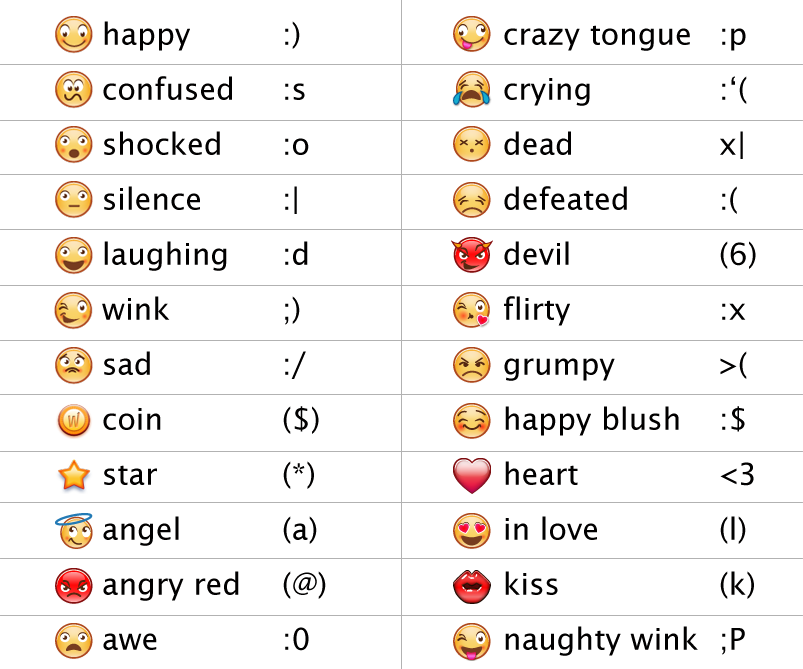
Содержание
The most famous emoticons
¯\_(ツ)_/¯ is the shrugging emoticon, or “shrug” emoticon.
Simple text emoticons
) – closing bracket, the emotion of joy, which can give a positive coloring to the written text or demonstrate your friendly attitude to the interlocutor. Similar in meaning emoticons: =) : ).
(- opening bracket, symbolizes sadness, disappointment. It is appropriate to use, for example, if a message from the interlocutor upset you.
))))) : D =D – equivalent to the abbreviation LOL emoticons, hinting that the person who sent them something very much laughed.
:’-) :’-D – laughing until you cry.
}:-> or ]:-> – two variations of the smile of an evil genius who has conceived an insidious plan or just a gloating person.
:-/ – if you are puzzled by something, confused or overwhelmed by a slight discontent, this sequence of symbols will express emotions as best as possible.
:-| ._. or -_- – these three emoticons are a great way to show ostentatious indifference or disregard for something.
*O* or *_* or ** – a strong admiration, an impression of what you’ve seen.
:-( ) :-[ ] :-0 o_O o.O – different variants of the emotion of surprise, which can be understood by a wide-open mouth and bulging eyes.
:-e – emoticon of the emotion of disappointment. It’s hard to say, really, why exactly it looks like that.
:-E or :E or :-t – rage, anger, strong aggression.
:-< is a sad mood emoticon.
:*) :-[ or %0 – used when a person is embarrassed about something/someone.

Emotional actions and gestures
The purpose of emoticons from this category, unlike the previously discussed ones, is not to convey the mood of the participant of correspondence, but to help describe various actions or signals sent.
:-* or :-{} – to indicate a kiss in text.
{} – with this emoticon you can demonstrate that you want to hug your interlocutor. :-P or :-p or :-P – teasing the person you are talking to with your tongue out.
[:]||||[:] is a picture of an accordion. In Internet slang, the name of this musical instrument usually refers to something that is no longer relevant and has been seen many times.
:-X – a request to shut up, keep your mouth shut, keep your mouth shut. /:-] – a hint that the interlocutor has a little bit of “attic leakage”.
*:O) – symbolic designation of a clown. If the participant of correspondence has taken too much humor and cannot stop, you can notify him about it.
@->->- – Rose. You can give a flower to your interlocutor.
(_!_) – naked human ass. It is unlikely that your friends or acquaintances will appreciate such a gesture in real life, but on virtual spaces such expression of emotions is quite common.

Emoticons of Characters and Characteristics
This set of emoticons allows you to depict a person with any expressed characteristic (both psychological and physical features) or a famous person, such as a character from a cult movie or cartoon, a historical figure, etc.
:-()=0 – depicts a person who has obvious problems with excess weight (fatty).
:-{) – emoticon with a bushy mustache.
:~X – denotes a person who prefers to keep his mouth shut and keep quiet.
L:) – is associated with losers/losers, unlucky people.
{(:-) is a wearer of false hair, a wig.
~(_8^(|) – recognizable face of Homer Simpson, the hero of a popular American animated series.
(:\/) – Pac-Man, a character from an old computer game.
(>o-< – a skydiving enthusiast.
<]:-o) – a wizard/wizardess, witch or sorceress (depends on the context of use).
Being a very emotional and creative nation, the Japanese quickly mastered communicating with emoticons. Moreover, their language rich in visual images allowed them to create several thousand variants of their emoji, called kaomoji (stands for face+symbol). Their main difference from the designations popular in Western culture is that the schematic image of a human face is always in a horizontal plane. It is not necessary to mentally turn it by 90 degrees. Otherwise, the differences are minimal, except that the Japanese are not shy to abundantly sprinkle emoticons with rare signs.
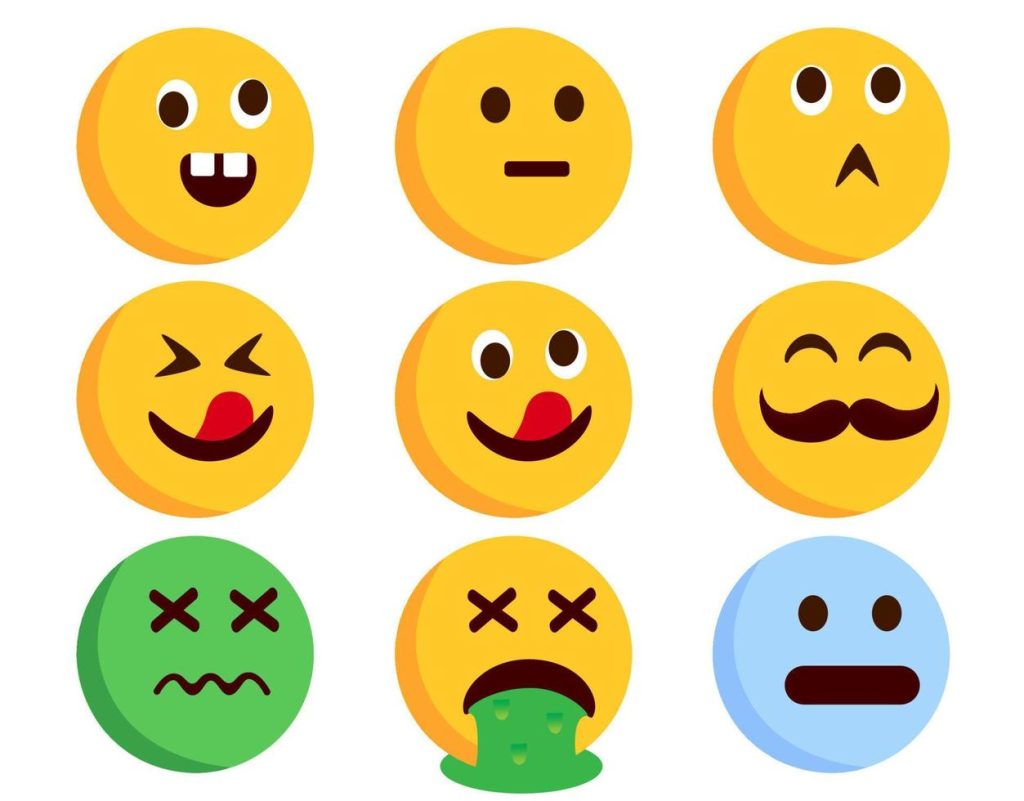
Japanese emoticons of positive emotions
Smileys of joy – usually characterized by highly planted eyes, smiling mouth and raised to the top of the stick hands. As a mouth can be used a variety of symbols, from the usual dot to the letters of the Greek alphabet. Many Japanese women use the letter ω (omega) for the mouth, which resembles a bowed lip. This way, in their opinion, the emoticon becomes more cute, “kawaii”.
| (* ^ ω ^) | (´ ∀ ` *) |
| (o^▽^o) | (⌒▽⌒)☆ |
| ヽ(・∀・)ノ | (´。• ω •。`) |
| (o・ω・o) | (@^◡^) |
| (^人^) | (o´▽`o) |
| ( ´ ω ` ) | (((o(*°▽°*)o))) |
| (´• ω •`) | (^▽^) |
| ╰(▔∀▔)╯ | (─‿‿─) |
| (✯◡✯) | (◕‿◕) |
| (⌒‿⌒) | \(≧▽≦)/ |
| (*°▽°*) | ٩(。•́‿•̀。)۶ |
| (´。• ᵕ •。`) | ( ´ ▽ ` ) |
| ヽ(>∀<☆)ノ | o(≧▽≦)o |
| \( ̄▽ ̄)/ | (*¯︶¯*) |
| (o˘◡˘o) | \(★ω★)/ |
| (╯✧▽✧)╯ | o(>ω<)o |
| ( ‾́ ◡ ‾́ ) | (ノ´ヮ`)ノ*: ・゚ |
| (๑˘︶˘๑) | ( ˙꒳˙ ) |
| (´・ᴗ・ ` ) | (ノ◕ヮ◕)ノ*:・゚✧ |
Love emoticons – Japanese people often use the heart symbol in them, placing it on the cheeks, in the hands of the emoji or even instead of the eyes. Asterisks (*) in context indicate embarrassment, as do the hands covering the emoji’s face. The letter ω (omega) indicates an intention to kiss the person you are talking to.
( ´ ∀ `)ノ~ ♡ – an emoji with a raised hand, a squiggle and a heart simulates an air kiss sent to the object of one’s interest.
Σ>-(〃°ω°〃)♡→ – the original “I’m in love” confession. A kawaii emoticon pierced by Cupid’s arrow.
♡ (˘▽˘>ԅ( ˘⌣˘) – a couple in love holding hands with a satisfied look.
☆⌒ヽ(*’、^*)chu – these three consecutive letters in Japanese are consonant with the sound of a kiss. In practice, it turns out something like the Russian `chmoki-chmoki’.
(ノ´ z “)ノ – emoticon with all its appearance showing that its sender wants to hug and kiss the addressee.
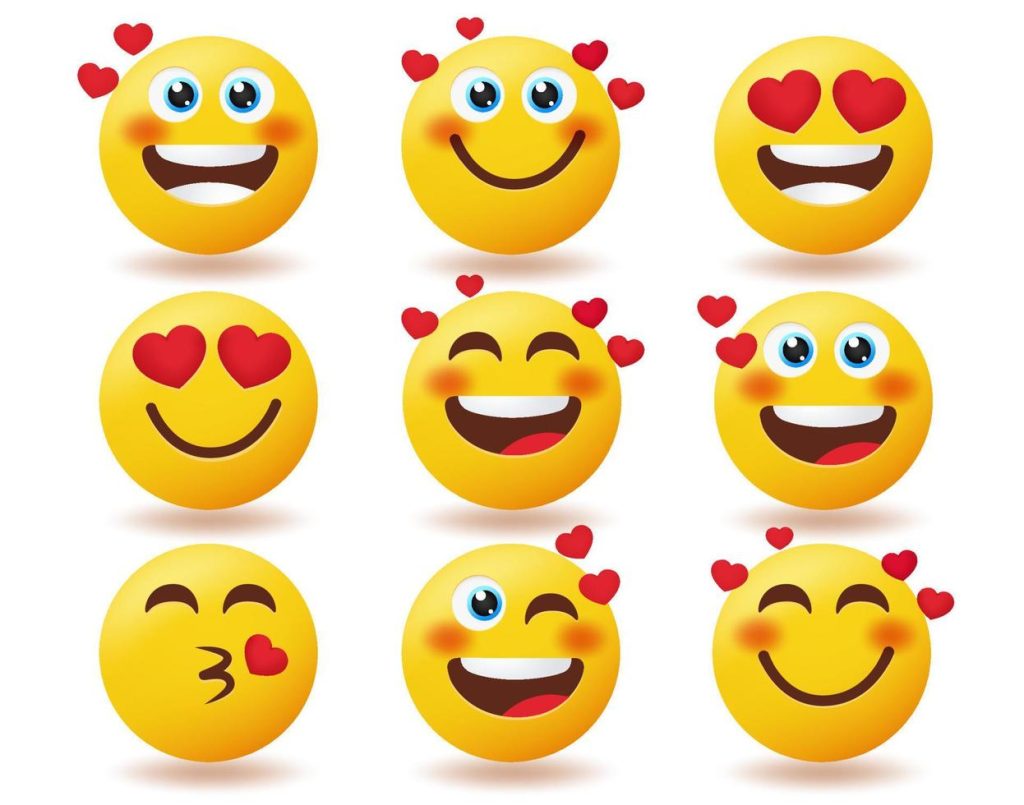
A few more options for love emoticons:
| (─‿‿─)♡ | (´。• ᵕ •。`) ♡ |
| (´ ω `♡) | ♡( ◡‿◡ ) |
| (ღ˘⌣˘ღ) | (♡°▽°♡) |
| (´• ω •`) ♡ | (´ ε ` )♡ |
| ╰(*´︶`*)╯♡ | (*˘︶˘*).。.:*♡ |
| (≧◡≦) ♡ | (⌒▽⌒)♡ |
| ♡ (˘▽˘>ԅ( ˘⌣˘) | ( ˘⌣˘)♡(˘⌣˘ ) |
| σ(≧ε≦σ) ♡ | ♡ (⇀ 3 ↼) |
| (˘∀˘)/(μ‿μ) ❤ | ❤ (ɔˆз(ˆ⌣ˆc) |
Embarrassment emoticons – as mentioned earlier, the most common symbol to represent this emotion is the * associated with a blush and/or various marks with lines imitating hands covering the face and eyes. Alternatively, oblique strokes may be used (////). This kind of drawing is often used in Japanese animation when it is necessary to display embarrassment on a character’s face.
( ◡‿◡ *) is a shy emoticon that lowers or closes its eyes.
(⁄ ⁄>⁄ ▽ ⁄<⁄ ⁄⁄) – severe embarrassment that made a person’s whole face blush.
(*/。\) – an emoticon embarrassed or ashamed of something, awkwardly trying to cover his or her face with his or her hands. Other common embarrassment emoticons are:
| (*/。\) | (*μ_μ) | (//▽//) |
| (*/_\) | (*ノωノ) | (o-_-o) |
| ( ◡‿◡ *) | (ᵔ.ᵔ) | (*ノ∀`*) |
| (//ω//) | (ノ*°▽°*) | (*^.^*) |
Sympathy emoticons are small scenes with two characters. One emoticon acts as a subject who is upset about something, and the second one gives him support. There is nothing stopping you from taking your favorite faces from other categories and combining them to your liking to make your own kaomoji.
(ノ_<。)ヾ(´ ▽ ` ) – a happy cheerful emoji pats his upset friend on the shoulder.
ヽ( ̄ω ̄ω ̄(。。。 )ゝ- a similar situation, but this time a sympathetic comrade puts a hand on the shoulder of a dejected buddy.
(o・_・)ノ”(ノ_<、)- a caring pat on the head.
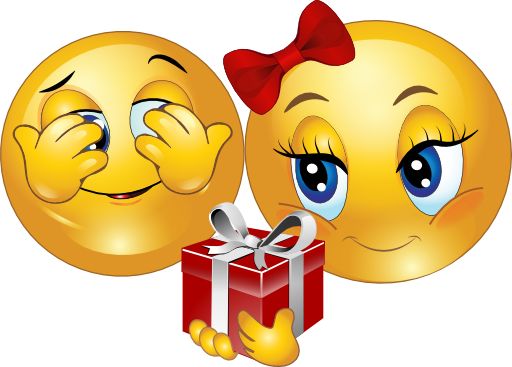
Japanese emoticons of negative emotions
Emoticons of discontent – the common expression of this emotion is considered to be a wrinkled face and / or closed eyes (in emoticons this convention moved from anime and manga). A # or ^ sign instead of a mouth, signaling a lower lip raised contemptuously upwards, is perfect for this purpose.
(#><) – This guy clearly saw something annoying him and squinted his eyes unhappily.
(︶︹︺) – symbolizes a contemptuous person looking at his interlocutor with disdain.
凸( ̄ヘ ̄) – there is no need to comment on anything. This emoticon not only does not hide its dissatisfaction, but also shows its attitude to the interlocutor with the help of the world-famous gesture.
<( ̄)> – this person clearly does not intend to joke and is ready to find out the relationship on raised tones with the subject who caused her dissatisfaction. Other types of displeasure emoticons:
| (;⌣̀_⌣́) | ☆o(><;)○ | ( ̄  ̄|||) | |
| (; ̄Д ̄) | ( ̄□ ̄」) | (# ̄0 ̄) | (# ̄ω ̄) |
| (¬_¬;) | (>m<) | (」°ロ°)」 |
Anger emoticons are the most negative emotion, which is hard to confuse with any other. At the head of the display here are the eyes, which in angry emoticons are usually drawn not in circles, but lines or sharp shapes with black fill. Wrinkles, attributes like claws or offensive gestures are added to give an even more intimidating effect.
(‡▼益▼) – a vicious grin, a scar on the cheek, black eyes and a wrinkled nose. This smiley demonstrates that it is best not to mess with him.
ψ(▼へ▼メ)~→ – The guy with the spear and pitchfork is obviously angry with someone, so it’s best to stay away from him.
(凸ಠ益ಠ)凸 – narrow pupils are often associated with anger, irritability, and other negative emotions, so they are a good fit for this emoticon.
٩(ఠ益ఠ)۶ – clenched fists and a fierce look. This angry emoticon symbols are not only angry, but don’t mind taking out their anger on someone.
Sad emoticons – one of the easiest to display. It is enough to pick up the symbols so that the eyes look crying, for example, use two letters T. Alternatively, you can draw hands-dashes that will cover the face. Dropped down corners of the mouth and raised up eyebrows also unambiguously hint at the state of despondency.
(μ_μ) – this emoticon has several meanings (depending on the context of correspondence). In this case, for example, it most of all resembles a tear-stained face.
( ゚,_ゝ`) is a sad emoticon symbol with a small tear.
(ಥ﹏ಥ) is an emotional emoticon with a trembling mouth, trying with all his might not to cry. 。゜゜(´O`) ゜゜゜。 is no longer just sadness, but sheer hysteria with a waterfall of tears.

Smileys of pain – usually it is a clenched suffering grimace, sometimes supplemented with all sorts of special effects like stun, scratches, scars and so on. Cross-eyes (X, x, and others) are well suited for the designation.
~(>_<~) is an emoticon that gets headaches.
(☆_@) – a guy being stunned and getting a nice black eye.
[ ± _ ± ± ] – crosses instead of eyes clearly hint that the smiley face would prefer to die at this point just to end his suffering.
(×﹏×) – a wavy mouth combined with cross-shaped eyes symbolizes held back painful emotions. Fear emoticons – a frightened emoji is easy to portray with the right eyes and hand gestures. Screams, attempts to cover the face, chaotic waves – all this can show how frightened a person is (from a slight stupor to panic and terror).
(・人・・) is a clear illustration of the saying, “Fear has great eyes”. A frightened look and pupils narrowed with terror.
\(º □ º l|l)/ – can be regarded as a call for help or running around shouting “help me”.
〜(><)〜- the frightened smiley face is clenched in fear and covers its ears with its hands.
..・ヾ(。><)シ- this smiley face is afraid and running away from something in panic.
Japanese emoticons of neutral emotions Indifference emoticons – are expressed as a characteristic shrug of the shoulders or spreading of hands to the sides. Pairs of symbols ┐ ┌ and ╮ ╭ are best suited for this purpose.Eyes are drawn with narrow horizontal lines or dots. Below you can see a few options for displaying your ostentatious indifference.
╮( ˘ 、 ˘ )╭
ヽ(ー_ー )ノ
ヽ(´ーー` )┌
┐(‘~` )┌
ヽ(  ̄d ̄)ノ
┐( ̄ヘ ̄)┌
ヽ( ̄~ ̄ )ノ
╮( ̄_ ̄)╭
Confusion emoticons are perfect, if a person needs to show their interlocutor that the message they have sent has left them very puzzled. They use characteristic hand gestures and triple dots (…), which are symbolic synonyms of thought process, loading, pause, information processing.
(◎ ◎)ゞ-a seriously puzzled emoticon scratching its head.
ლ(ಠ_ಠ ლ) – the emoji depicts intense mental tension or, depending on the context, an attempt to convey some thought to your opponent.
(・・ ) ? – A question mark near the head, universally used to indicate misunderstanding.
(-_-;)・・・・・- stay out of the way, the person is thinking things through carefully.

Emoticons of doubt – this emotion are most easily conveyed by averting one’s eyes to the left or right. Pointer symbols, such as arrows, are used to convey meaning. A few variations can be seen below.
¬_¬)
(→_→)
(¬ ¬ ¬)
(¬‿¬ )
(¬_¬ )
(←_←)
(¬ ¬ )
(¬‿¬ )
Smiley faces of surprise – drawn with eyes that are round, white inside or have tiny pupils, sometimes with their mouth open and showing specific hand gestures. The symbol Σ in this context shows a sudden startle.
( : ౦ ‸ ౦ : ) – the smiley face is very confused or even stupefied by what it sees.
(°ロ°) ! – A combination of two emotions, an exclamation mark showing surprise and a mouth open in a smile. Indicates that the news suddenly received was pleasant.
(⊙_⊙) – shocked, puzzled, but clearly not happy emoticon.
w(°o°)w – “fuck it”, “how come”, “why did this happen”.
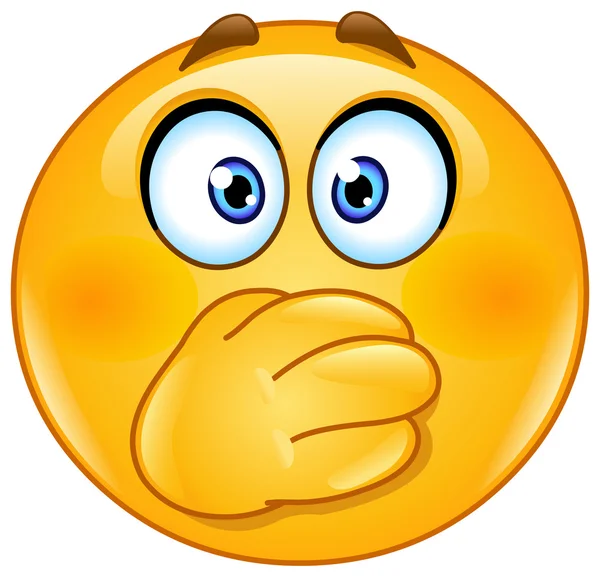
Denoting various actions with Japanese emoticons
Greeting. The simplest way to imitate this action will be raised up the right or left hand of the smiley face. You can use a special symbol with two small dashes on top (ノ゙), which resembles a greeting waving from side to side.
( ̄▽ ̄)ノ
(*・ω・)ノ
(°▽°)/
( ´ ∀ ` )ノ
(^-^*)/
(@´ー`)ノ゙
(´- ω -`)ノ
( ° ∀ ° )ノ゙
Hug. If you want to show your conversation partner that you are mentally hugging him or her or just want to express your support, use an emoticon with your arms spread apart. There are many variations – here are just a few of them.
(づ◡﹏◡)づ – an indulgent hug from someone who just can’t say no to the other person.
(つ . -́ _ʖ -̀ .)つ-a sympathetic hug. The person is concerned about what he has heard from the interlocutor and wants to give him support.
(づ ̄ ³ ̄)づ – a hug with kisses.
(づ ◕‿◕ )づ – joyful hugs.
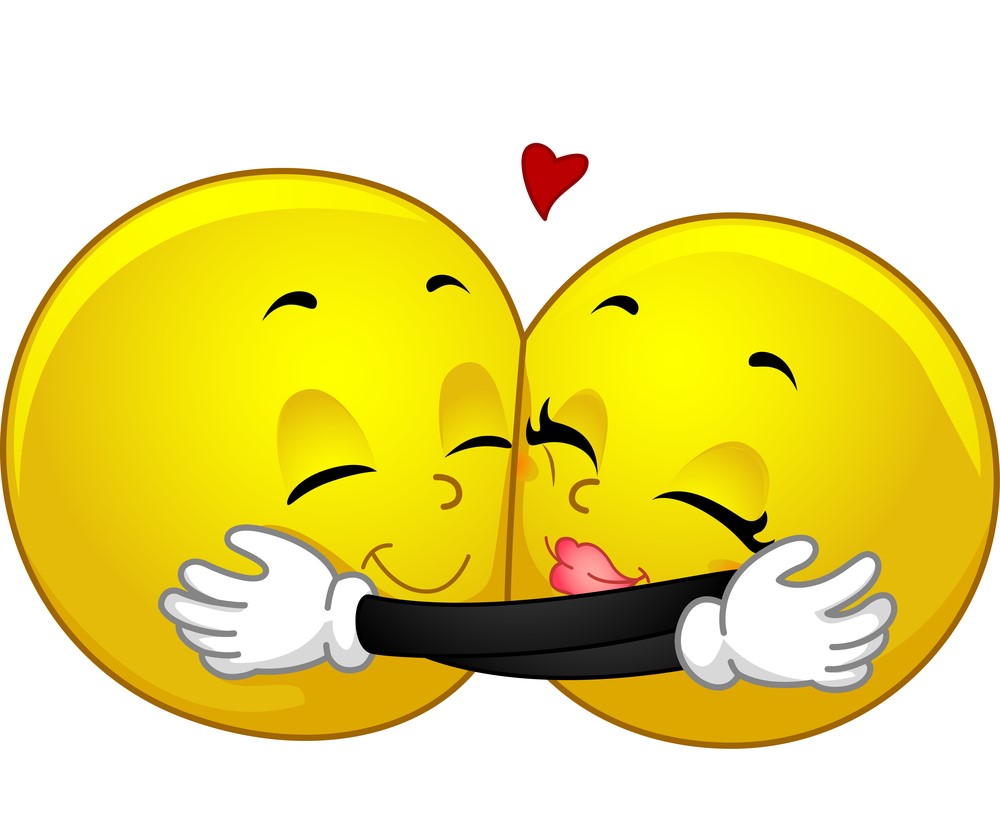
( ゚o⌒)
(^_-)≡☆
(^ω~)
(>ω^)
(~人^)
(^_-)
( -_・)
Apology. Among the Japanese, it is customary to apologize with a slight bow, so the emoticons reflect a similar pattern. The eyes are drawn small and pointing downward, thus depicting remorse. Different hand gestures will diversify the emoji.
(シ_ _)シ- hands in motion symbolize repeated bowing.
<(_ _)> – a deep bow and confession of guilt.
m(_ _)m – the letters m represent bows from a sitting position. The hands are resting on some surface, such as resting on a table. Sleep. Here the representation differs little from that adopted in Europe. It is enough only to draw closed eyes and attribute something like Zzzzzzzz. This letter is usually used to imitate the snoring of a sleeping person.
(x . x) ~~zzZ – the combination of the sleep emoticon and cross-eyes suggests that the subject is sound asleep and will not be easily awakened.
(-ω-) zzZ – this emoticon is clearly having pleasant dreams.
(_ _*) z z z z – sleeping with his face tucked into the pillow.
( ̄ρ ̄)..zzZZ – sleeping with your mouth open and drooling smiley face.

Hide-and-seek. If you need to depict an action in which your emoticon character is hiding, character sets allow you to do so. The emotion reflected on the face will enlighten the interlocutor about the context of what is happening. Here are some examples.
┬┴┬┴┤(・_├┬┬┴┬┴┴) – the emoticon cautiously and with a rather frightened look looks out from behind the wall, clearly expressing apprehension and concern about what is seen.
┬┴┬┴┤( ͡° ͜ʖ├┬┴┬┴ – the famous 4chan meme Lenny’s face is hiding behind the wall. It is often used by people who want to express their interest or who have done something bad and are now satisfied with what they have done. You can use it to troll your opponents on forums and in chat rooms.
ヾ(・| – a cautious emoticon calling out to your buddy.
Writing. When you need to demonstrate that you are writing something, the symbol φ, which resembles a pen quite closely, is excellent. A simple underscore _ is usually used as paper or any other surface.
ヾ( `ー´)シφ__ – a smiley face with hand movements shows that a person is writing something very quickly, in a hurry.
__φ(....;) – the semicolon and small eyes hint at the subject’s concentration.
( ^▽^)ψ__ is another variant spelling. This time the equally appropriate ψ is used instead of the symbol φ. However, if you use it in the wrong context, the image of the writer can be confused with a person sitting with a fork in front of a plate.
Animal Smileys
Cats. As some of the cutest and most adorable creatures on the planet, cats have gained popularity in many cultures. And in Japan, so and in general, they made a real cult (take for example all these numerous anime characters with cat ears and tails). Smileys with cats are the most popular among animal kaomoji. Here are some of the best choices:
ଲ(ⓛ ω ⓛ)ଲ – large eyes with vertical pupils and sharp claws.
(^˵◕ω◕˵^) is a kawaii kitty.
ヾ(=`ω´=)ノ” – angry and scratching cat about something.
( =ω=)..nyaa – the famous nyaa is nothing but a cat’s meow.
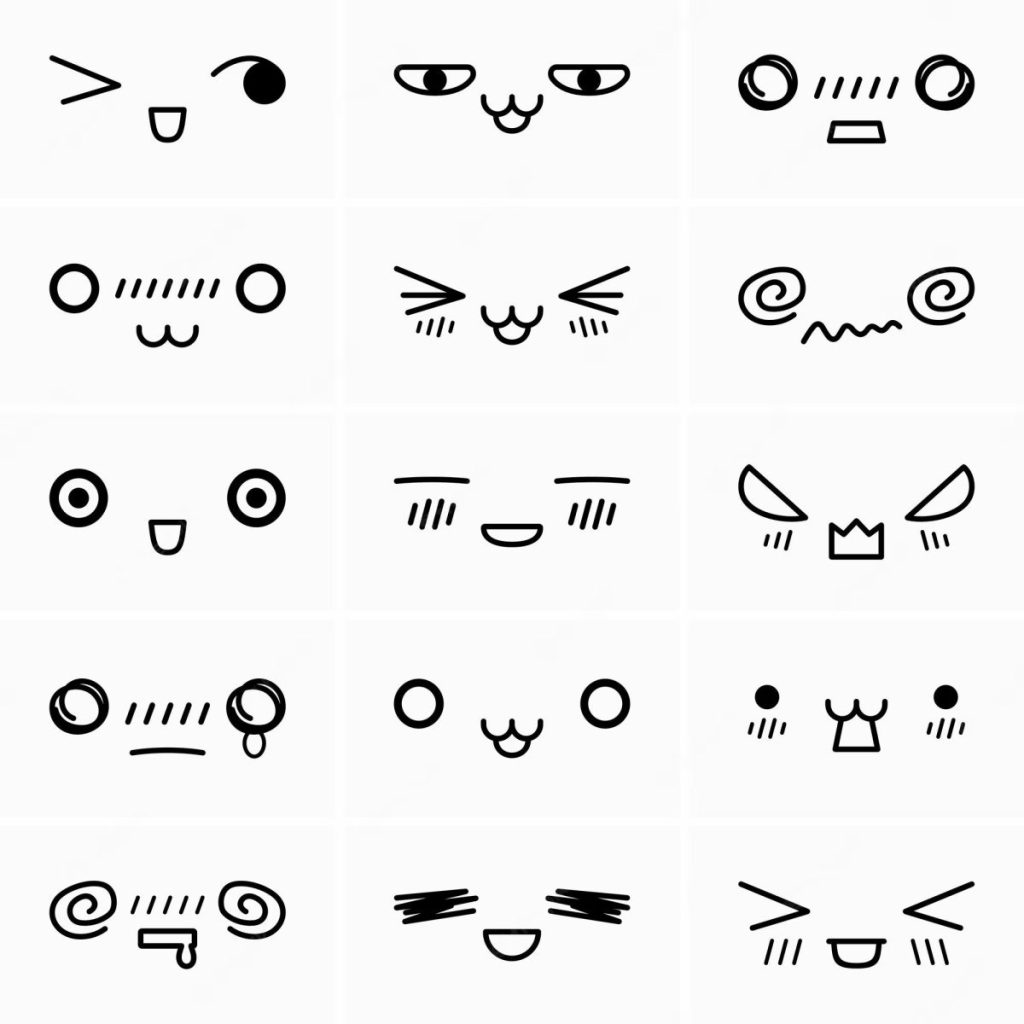
Bears. These animals are distinguished by their characteristic muzzle (I) and rounded ears. Other elements like upwardly raised paws are optional.
ʕ ᵔᴥᵔ ʔ is a kawaii little bear.
(/ ̄(エ) ̄)/ – a large bear standing on its hind legs and swooping down with its front legs.
ʕ -̀ o -́ ʔ – a surprised bear.
Dogs. Dogs in Japanese emoticons have floppy ears that simultaneously function as outlines for their muzzles. Eyes are usually represented by lines or dots of different sizes.
∪^ェ^∪
∪・ω・∪
∪ ̄- ̄∪
∪・ェ・∪
U^皿^U
UTェTU
U^ェ^U
V●ᴥ●V
∪◣_◢∪
(▽◕ ᴥ ◕▽)

Spiders. Insects with lots of legs and eyes require an equally large number of characters to create a believable realization in emoticons. You can see some original examples below.
/╲/\( -̀ ω -́ )/\╱\
/╲/\╭(ఠఠ益ఠఠ)╮/\╱\
/╲/\╭(ರರ⌓ರರ)╮/\╱\
/╲/\╭༼ ºººل͟ººº ༽╮/\╱\
/╲/\╭( ͡°͡° ͜ʖ ͡°͡°)╮/\╱\
/╲/\╭[ ᴼᴼ ౪ ᴼᴼ]╮/╱\
/╲/\╭[☉﹏☉]╮/╱\╱\
Other animals. The list of running, flying and swimming creatures that are depicted using special symbols and letters of several alphabets is huge.
( ̄(00) ̄) is a pig. All emoticons with this animal are drawn with an emphasis on the nose. You can also use oo or the ω symbol for the nostrils.
\( ˋ Θ ´ )/- a bird. When making a smiley face, the beak, which comes in round and diamond shapes, is definitely emphasized.
>°))))彡- being great fans of fish and seafood, the Japanese have added quite a few “fish” emoticons. Fish are drawn with a pointed or open mouth, and brackets are usually used as scales or tails.
≧( ° ° ° )≦ is a crab, another sea creature. The variant (\/)_(0_0)_(\/) is also common.
Japanese emoji with food
There are plenty of Japanese people who like to eat and drink a lot, which is reflected in the variety of emoji. If you’re looking for an emoji with a drink or dish, there are plenty to choose from.
( o˘◡˘o) ┌iii┐-a birthday cake with candles. You can originalize it by attaching a similar emoticon to your social media greeting.
( ・・・)つ-{}@{}@{}@{}- is one of the many emoticons depicting cooking a kebab.
( *^^)o∀*∀o(^^* ) – drinking cocktails together.
(っ˘ڡ˘ς) – licking emoticon. Can be combined with many others depicting different foods and drinks.
(*´z`)口゚。゚口(・∀・ ) – a couple of emoji with full mugs of beer.
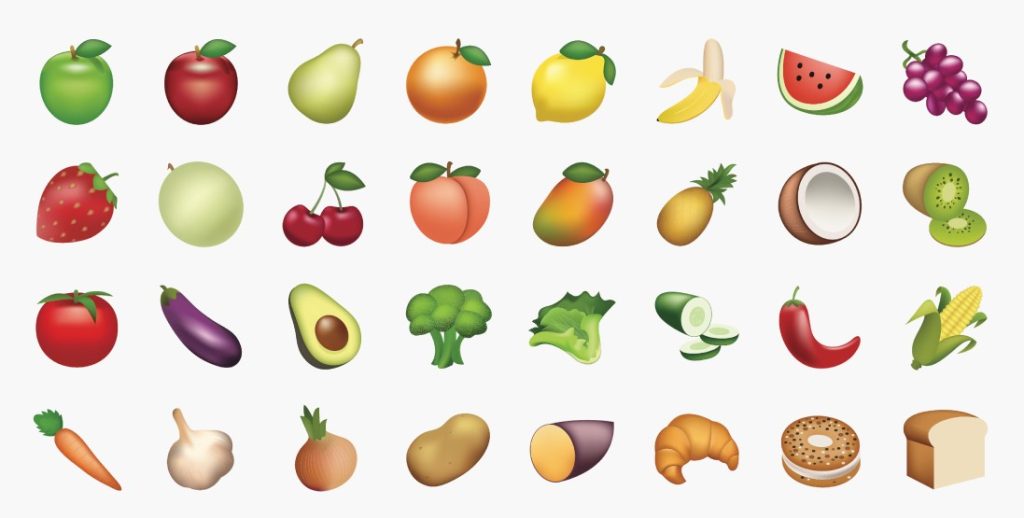
Japanese emoticons with weapons
A set of belligerent emoticons or individual weapons will be perfect not only for correspondence, but also for nickname decoration in Counter-Strike, Warface and other shooters. Find the necessary symbols on the keyboard you are unlikely to be able to (they simply do not exist), so just copy the sequence of characters you like from the list below.
( -ω-)/占~~~~~ – a happy emoticon, ready to spray its enemies with a gas can.
(^ω^)ノ゙(((((((((●●~* – a grenade thrower.
(メ` ロ ´)︻デ═一- sniper and rifle with telescopic sight.
( ・∀・・)・・・・—☆- throwing a throwing star.
Q(`⌒´Q) – this guy doesn’t need firearms, just strong fists will suffice.
-(T_T)→ – The poor guy was pierced by an enemy spear.
(/・・・)ノ (( く ((へ- boomerang throw.
(メ ̄▽ ̄)︻┳═一- a machine gunner.
Korean emoticons (Kaomoji) of joy
(☆ω☆) ٩(◕‿◕)٩(◕‿◕)۶ (´ω`) (´。- ᵕ -。) (´ ▽) ( ̄▽ ̄) (⌒ω⌒) ヽ(・ω・)ノ (≧ω≦) \(≧▽≦)/ ╰(▔∀▔)╯ (¯︶¯) (^▽^) (✯◡✯) \(^▽^)/ (◕‿◕) 。゚(゚^∀^゚)゚。 ヽ(>∀<☆)ノ (´▽*) ⌒(o^▽^o)ノ (o´▽o) \( ̄▽ ̄)/ ヽ(⌒▽⌒)ノ ∑d (゚∀゚d) o (≧▽≦)o (゚▽゚) (≧◡≦) (⌒‿⌒) (@^-^) (っ˘ω˘ς) <( ̄︶ ̄)> (⌒-⌒) (- ‿‿-) ヽ(・∀・)ノ (´。- ω -。) ヽ(o^-^o)ノ (o˘◡˘o) (─‿‿─) (*^‿^*) (o^▽^o) ╰(*´︶)╯ (((o (゚▽゚*)o)))) (^人^) (⌒▽⌒)☆
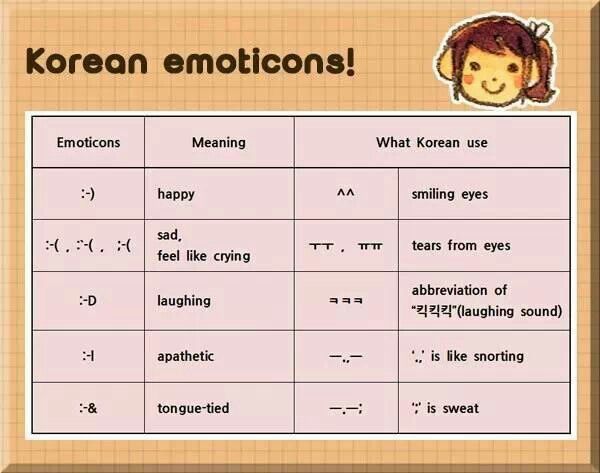
Other Symbol Emoticons
This section contains emoticons that do not belong to specific categories and do not find frequent use. Nevertheless, they can be quite useful in some situations.
٩(ˊ〇ˋ*)و is the waking up emoticon.
( ̄^ ̄)ゞ-stood in line and saluted (army salute).
(-‸ლ)- palm over the face (a famous facepalm meme).
(╯°益°)╯彡┻━┻ – an expression of intense anger, the emoticon turns the table.
(╮°-°)╮┳━━┳ ( ╯°□°)╯ ┿ ┻━━━┻ – a more detailed version of what happened in the previous picture.
┬─┬ノ( º _ ºノ) – carefully put the furniture back (if the interlocutor used one of the previous two emoticons, you can answer him/her).
(oT-T)尸- a crying emoticon with a raised white flag, depicts surrender.
[̲̅$̲̅(̲̅ ͡° ͜ʖ ͡°̲̅)̲̅$̲̅] is one variant of the money emoticon.
౦0o 。 (‾́。‾́ )y~~~ is an emoticon with a picture of a smoker.
( ̄﹃ ̄) – the emoticon hints that its sender is hungry or drooling over some delicacy.
(x(x_(x_(x_x(O_o)x_x)_x)x) – a crowd of zombies behind a living person’s back.
( ・ω・)☞ – a smiley face pointing in the direction.
(⌐■■_■■) is just an emoji wearing sunglasses.
(◕‿◕✿) is a female emoji with a flower in her hair.
(  ̄.)o-【TV 】- a viewer watching TV programs with a remote control in his hand.
`、ヽ(ノ><)ノ `、ヽ`☂ヽ- the wind carried away the poor man’s umbrella during the rain.
‿︵‿ヽ(°□° )ノ︵‿︵- drowning and screaming for help emoji.
( – )( – )ԅ(≖‿≖ԅ) – a guy getting ready to feel his girlfriend’s charms.
( ^▽^)っ✂╰⋃╯- castration/circumcision (depends on the context of use).
〜〜(/ ̄▽)/ 〜f- chasing butterflies.
ଘ(੭ˊ꒳ˋ)੭✧-an angel with wings.
∠( ᐛ 」∠)_- an emoticon lying on its side and watching something.

Conclusion
Recently, funny emoticons from symbols have lost their relevance during online correspondence. Now almost all social networks, forums, messengers and other types of resources provide their own sets of emoticons/stickers, much more colorfully illustrating the desired emotions. Nevertheless, creative people will always be able to find a use for thousands of different sequences of signs. In the same online games and chat rooms will look great decorated with symbols nickname.
P.S. If you want to create your own emoticon or find original symbols for their emoji, you can use one of the many databases on the Internet. In convenient catalogs there are a huge number of options on a variety of topics. And as for portable devices on Android and iOS, for complex text emoji there is a special application that allows you to find and insert a prepared text emoji into the text in a couple of taps.
